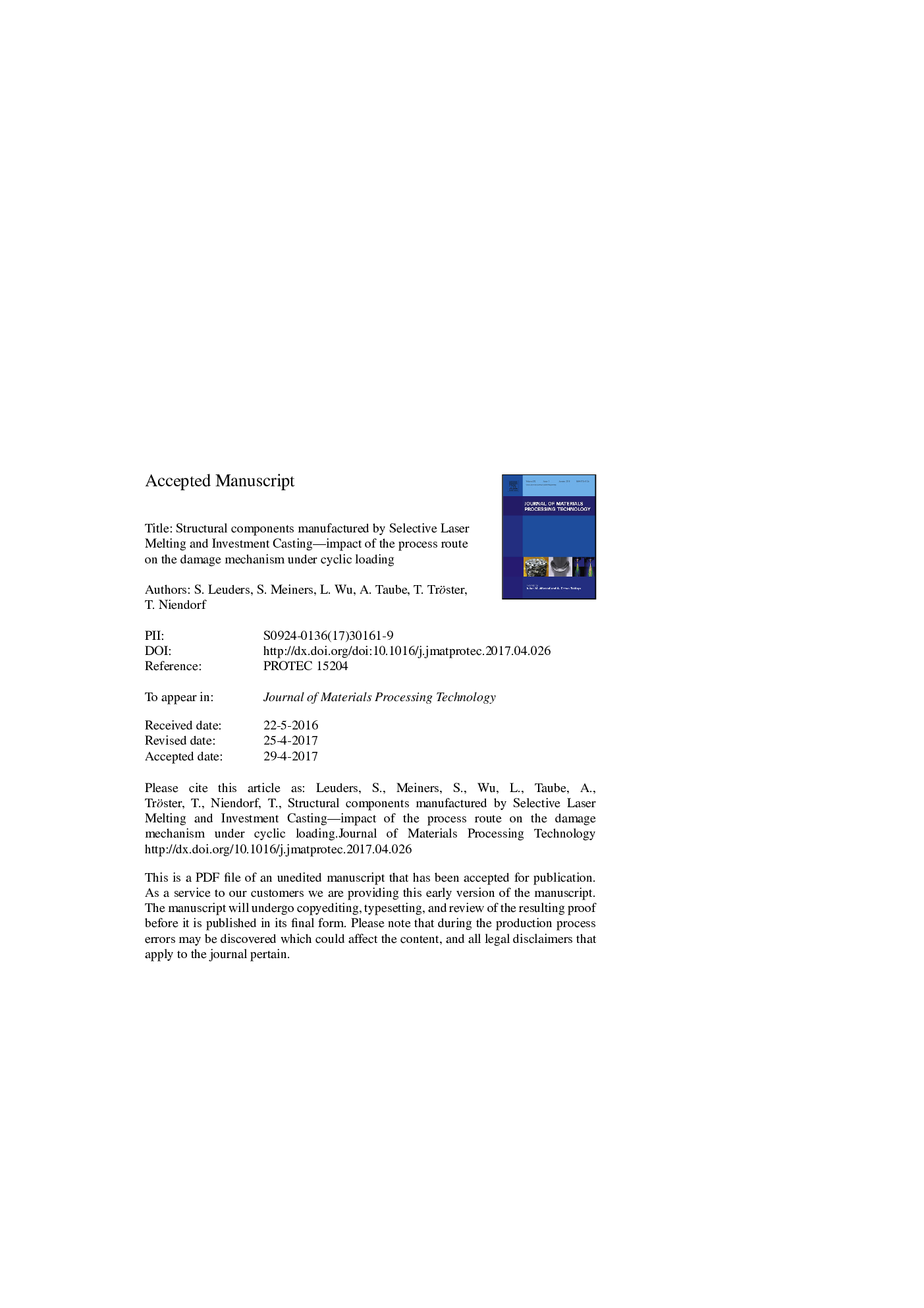| Article ID | Journal | Published Year | Pages | File Type |
|---|---|---|---|---|
| 5017993 | Journal of Materials Processing Technology | 2017 | 34 Pages |
Abstract
Selective Laser Melting (SLM) has recently gained increasing interest due to numerous advantages related to additive manufacturing, e.g., the unrivaled level of design freedom and the feasibility of tool-free production directly from CAD-data. Thus, this manufacturing technique will more and more complement existing production chains and compete with traditional processes. In case of the here considered titanium alloy Tiâ6Alâ4V, which is of high interest for various applications in the aerospace industry, complex components are currently often produced by investment casting (IC). Although both processes have their inherent advantages and drawbacks, a fundamental comparison of a component manufactured by these techniques has not been performed so far. Therefore, the present study investigates the impact of application-oriented process routes on the resulting properties of Tiâ6Alâ4V, manufactured by the aforementioned manufacturing processes. Employing hot isostatic pressing, shot peening and numerous test procedures on lab-scale specimens and demonstrator components it is shown that the monotonic stress-strain behavior of SLM-processed Tiâ6Alâ4V is superior to the IC-counterparts. But still, due to process-induced defects within the SLM-parts, this is contrary for loadings in the high-cycle fatigue regime.
Related Topics
Physical Sciences and Engineering
Engineering
Industrial and Manufacturing Engineering
Authors
S. Leuders, S. Meiners, L. Wu, A. Taube, T. Tröster, T. Niendorf,
